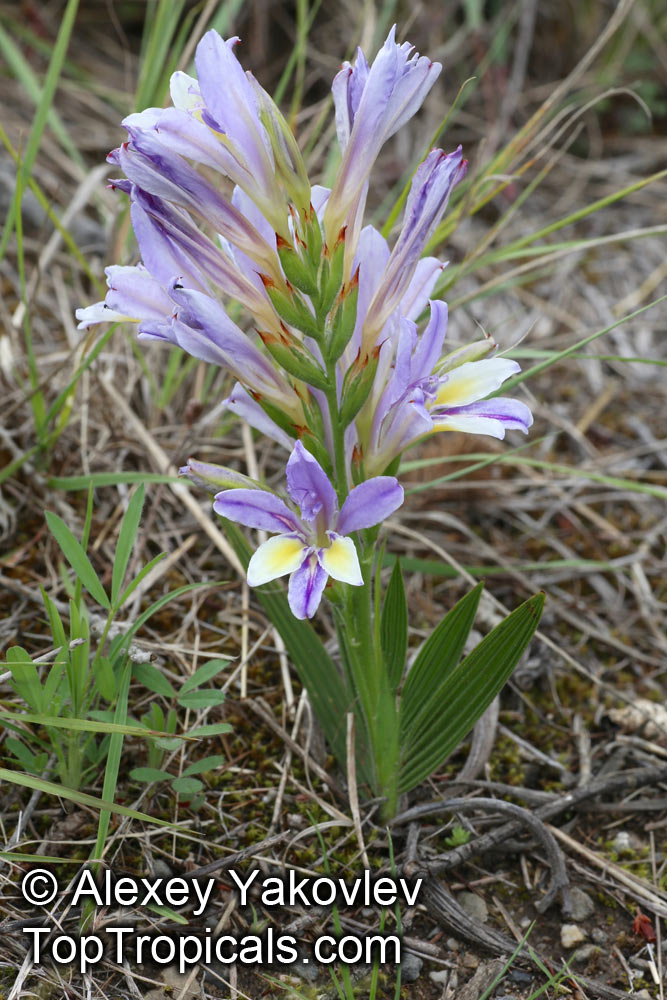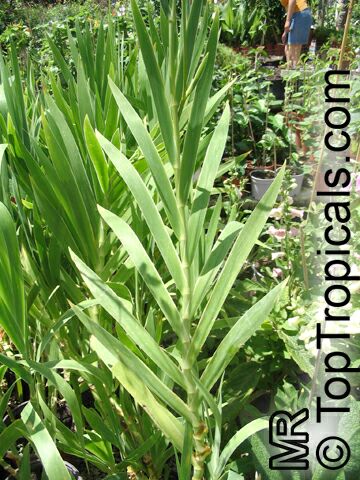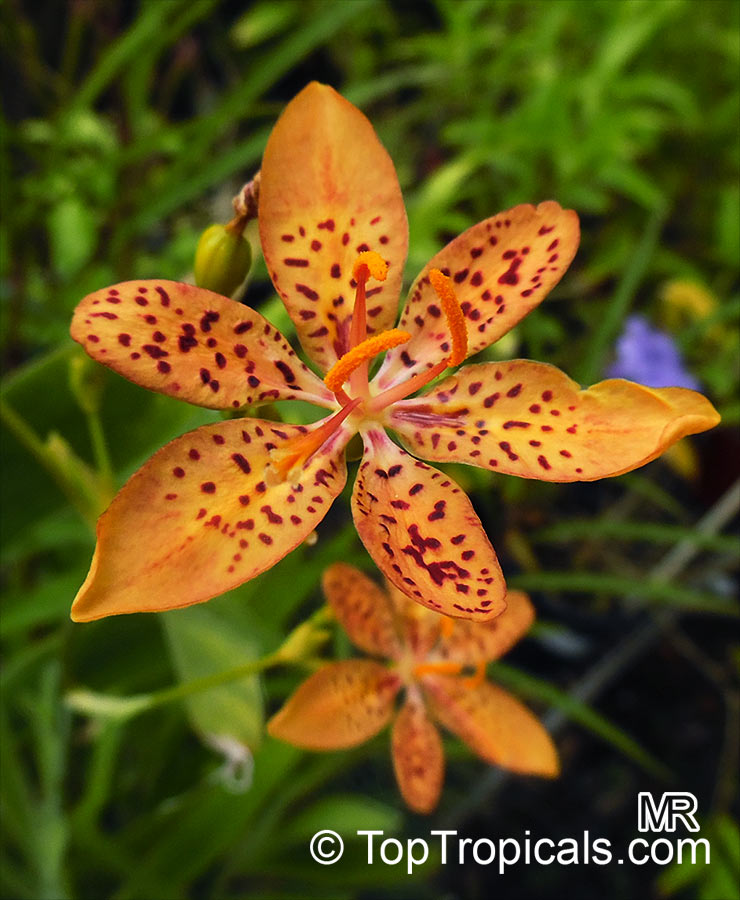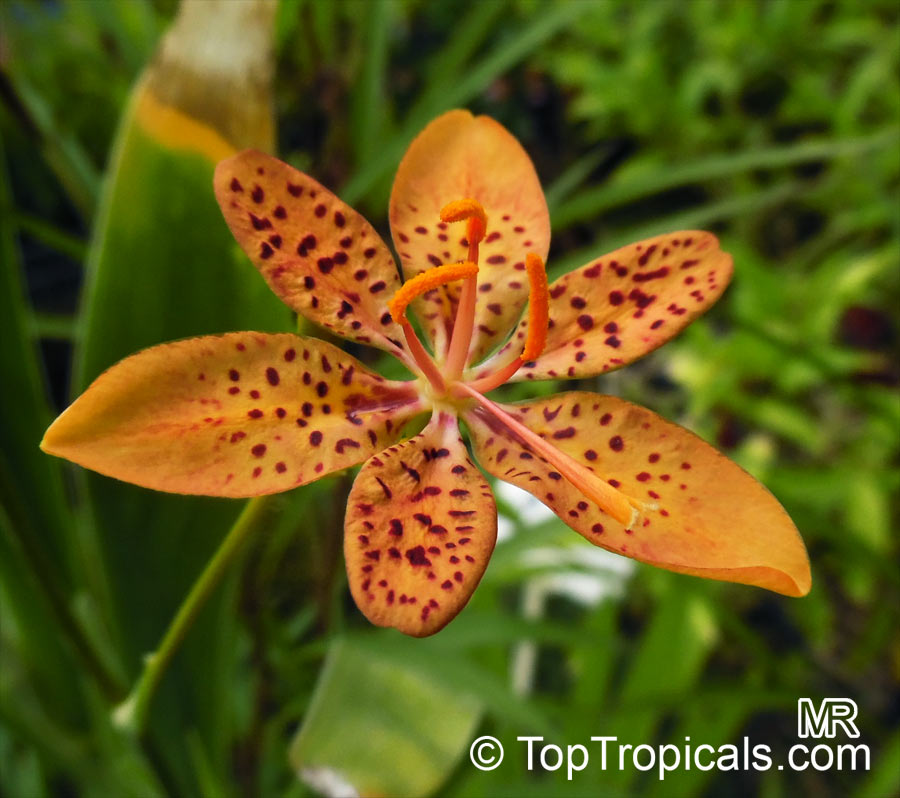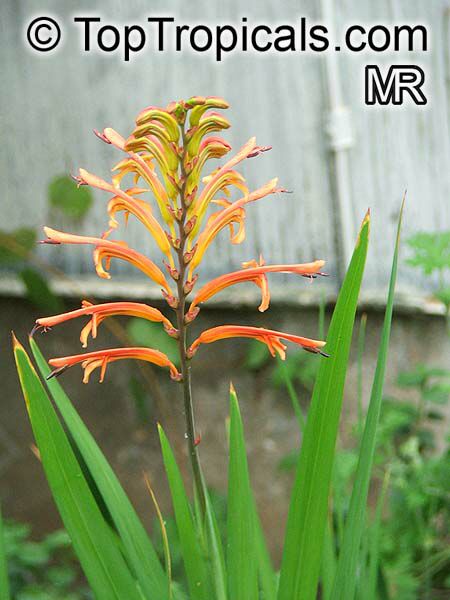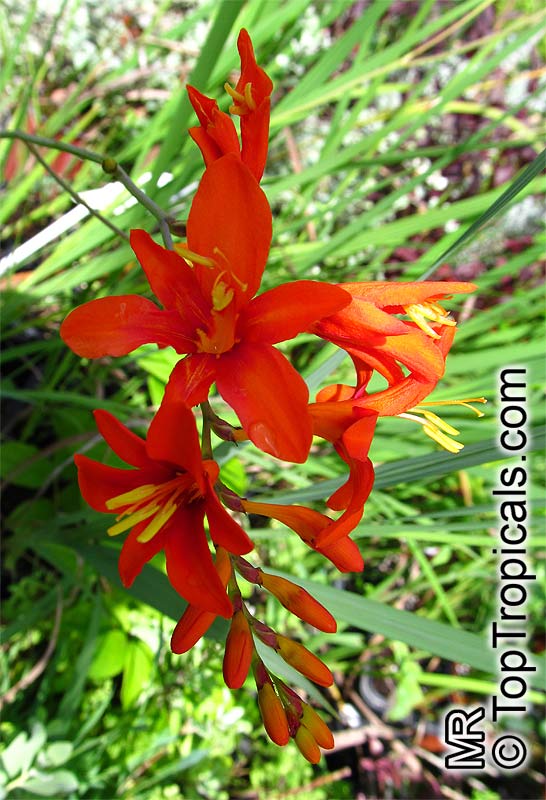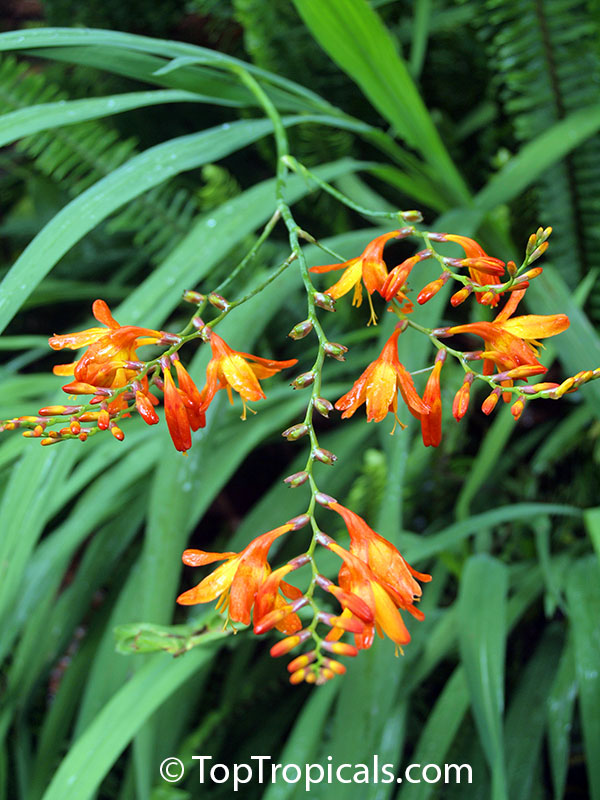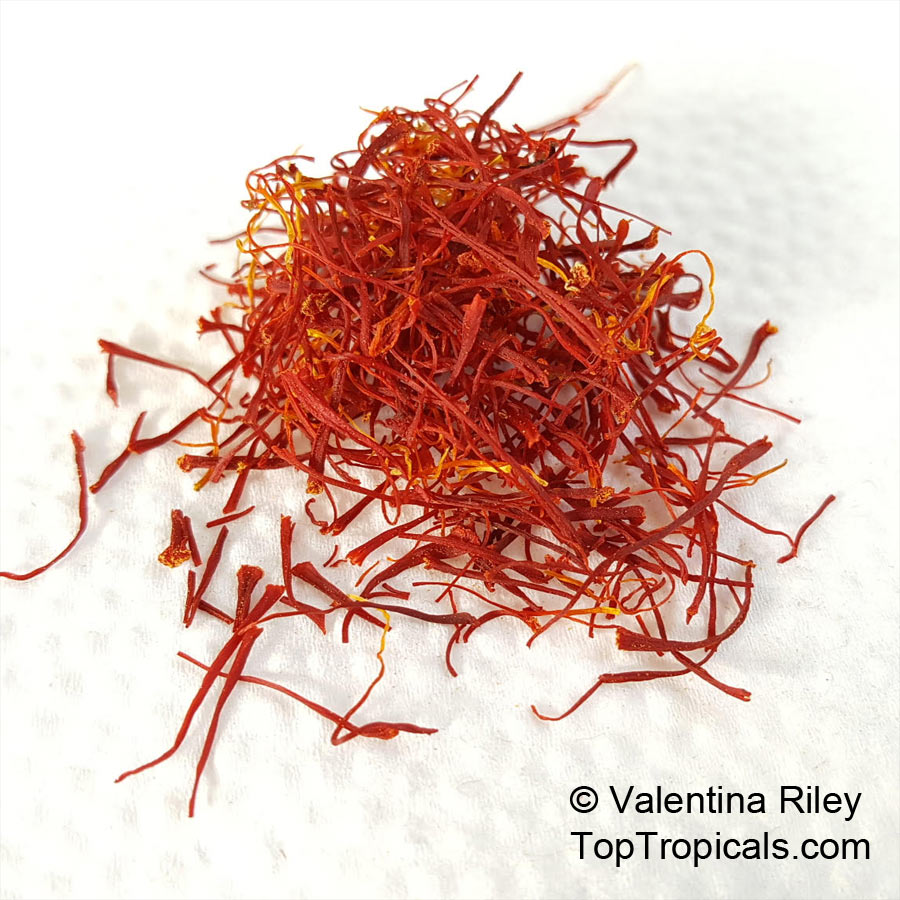Iridaceae - Botanical Family
Top Tropicals Plant Encyclopedia
| Number of plants found: 28 | Next | 
|
Go to page: | 1 | 2 | 3 |
Botanical name: Babiana sp.
Common name: Babiana
Family: Iridaceae
Subfamily: Ixioideae
Origin: South Africa










All Babianas are deciduous, either winter or summer growing. Most are winter growing. Like most other winter growing (or Mediterranean climate) irids, they start their growth cycle in autumn when the first rains fall.
The flowers are long lasting and brightly colored, and many are scented as a bonus.
Botanical name: Belamcanda chinensis
Common name: Blackberry Lily
Family: Iridaceae
Origin: SE Asia









Plant in fertile soil in full sun to partial shade. Adapts to most soil types. Blackberry Lily is quite unique as it tolerates wet soils and drought conditions. The foliage looks similar to an Iris. When ripe the seed pods look like clusters of Blackberries and are useful in dried arrangements.
Botanical name: Chasmanthe aethiopica
Common name: Cobra Lily
Family: Iridaceae
Origin: South Africa









The stem is inclined with the flowering spike held almost horizontally and the flowers curving outwards in a double row along the upper side.Chasmanthe aethiopica thrives in relatively fertile, freely draining soil and will soon spread naturally through division of the corms in favourable situations. Plants are winter-growing and must be kept dry during their summer dormancy. The species does best in milder climates and is not hardy below -5 C.
Botanical names: Chasmanthe floribunda, Antholyza floribunda
Common names: Pennants, African Cornflag
Family: Iridaceae
Origin: South Africa







This small plant grows up to 2-5 feet tall and produces brilliant red and crimson-colored flowers. There are also some varieties that boast yellow and orange blooms. It is best grown in full sun and requires regular to moderate water. Sporadic pruning will promote better flowering in the spring and fall. The flowers attract butterflies and hummingbirds, making it a great addition to any ornamental garden.
Chasmanthe floribunda (Pennants) is native to South Africa and is grown in USDA zones 10-11. However, if grown in a pot in a cold region, it is best to move the containers inside during the winter season. Potted Chasmanthe needs extra care and protection during cold weather. Make sure to provide enough water and create a warm and bright environment. The plant can also be kept in a greenhouse or conservatory where temperatures don't drop too low, even during the winter months.
It's worth the effort to grow Chasmanthe, as it is a beautiful addition to any garden. Not only will its vibrant flowers add color and life, but they will also attract butterflies and hummingbirds. With the right care this South African native will bring years of joy and enjoyment.
Botanical name: Crocosmia sp.
Common names: Coppertips, Falling Stars, Montbretia
Family: Iridaceae
Origin: South Africa









Crocosmia are a beautiful, long-lasting perennial that brings vibrant colors, and buzzing life to any garden. Crocosmia are deciduous, cormous perennials with erect, sword-shaped leaves and branched spikes of showy, funnel-shaped flowers in summer. Varieties produce blooms in a range of colors, including orange, yellow, red, crimson and vinous tones. Generally, these plants are resilient, thriving in full sun to semi-shade and tolerating a wide range of soils provided they are well-drained, with a preference for those containing loam, gravel and sand.
Crocosmia require moderate to regular watering, and benefit from fertilizer during the growth period in the spring and summer and a layer of mulch to protect corms in cooler periods. When planted in a warm, temperate climate, these hardy plants tolerate temperatures down to around 30 degrees Fahrenheit and usually bloom from October to May. However, if growing Crocosmia in colder climates, it is best to grow them in pots and bring indoors or cover during the winter, when temperatures dip into the low 20s Fahrenheit.
These vibrant plants not only restore color to gardens but also provide a home to butterflies, bees and hummingbirds. To further attract these species, ensure a sunny location and a reliable water source and adding a few mealworms.
Crocosmia can be grown in garden beds or pots; for colder regions, choose a container-grown plant and use a well-draining, sandy, loamy soil mixture. Additionally, provide plenty of sunshine, keep soil moist, and fertilize with general-purpose compost in the spring for vibrant, long-lasting blooms all season.
Recommended Fertilizer: SUNSHINE Megaflor - Bloom Nutrition Booster
Botanical name: Crocus sativus
Common name: Saffron
Family: Iridaceae
Origin: Southwest Asia







The flower has three stigmas, which are the distal ends of the plant's carpels. Together with its style, the stalk connecting the stigmas to the rest of the plant, these components are often dried and used in cooking as a seasoning and coloring agent. Saffron also has medicinal applications.
Botanical name: Dierama dracomontanum
Common names: Hairbells, Angel's Fshing Rod, Fairybells, Wandflowers
Family: Iridaceae
Origin: South Africa






Dierama is an evergreen, mainly summer growing geophyte. It has long, narrow tough fibrous foliage and pendulous bell-shaped flowers. It has light to dark rose pink, coral or red, sometimes purple pink flowers.
Botanical names: Dietes bicolor, Moraea bicolor
Common names: Evergreen Iris, Spanish Iris, African Iris
Family: Iridaceae
Origin: South Africa








Native to southern Africa, Dietes bicolor is a clumping evergreen perennial known for its narrow, sword-like leaves and soft yellow flowers marked with dark spots. It grows with an upright, fountain-shaped habit and typically reaches about 2-3 ft in height, forming dense fans of foliage over time. The flowers appear in warm months and open in cycles, each lasting only one day, but the plant produces them repeatedly. The overall effect is a tidy, architectural plant with subtle color contrast and clean texture suitable for borders and container plantings.
What are the key features of Dietes bicolor?
This species prefers bright light and well-drained soil with regular watering during active growth. It handles short dry spells but performs best with steady moisture. Growth is moderate in warm climates and slows during cooler periods. Dietes bicolor is suitable for large containers and can tolerate brief drops near 30F if kept dry, though protection is recommended in colder conditions. USDA zone is generally 9-11. The plant is non-edible and may cause mild irritation if handled roughly. It resembles Dietes iridioides but has lighter flowers and a more open bloom structure.
Recommended Fertilizer: SUNSHINE Megaflor - Bloom Nutrition Booster
Botanical name: Dietes iridioides var. amatola
Common names: African Iris, Fortnight Lily, Morea Iris
Cultivar: Amatola
Family: Iridaceae
Origin: Kenya, South Africa





A single plant of Dietes iridioides Amatola can reach a size of 2ft in both height and width. The plant will flower with white and off-white flowers throughout its growing season. This African Iris is useful as a groundcover in USDA Zones 9-11, making them well suited for planting in gardens in warm temperate regions. Once established, the plants are extremely drought tolerant and able to cope without regular watering.
For those living in cooler climates, Dietes iridioides Amatola can be grown in containers, though the plants will require extra protection from the cold in winter. During winter the small pots should be moved indoors or placed in a sheltered spot under the eaves. The soil in the containers should be kept moist in summer and dried out slightly in winter months to reduce the risk of root rot.
Dietes iridiloides Amatola is an easy to care for plant and is ideal for adding texture and interest to your garden. It will perform best when grown in full sun to partial shade and with regular watering during the summer months. With careful attention, the fortnight lily will produce stunning white and off white flowers throughout its growing season and provide you with a lovely ground cover.
Botanical name: Dietes robinsoniana
Common name: Lord Howe Wedding Lily
Family: Iridaceae
Origin: Australia




Dietes robinsoniana, the Lord Howe Wedding Lily is found naturally only on Lord Howe Island. This is the largest plant in the genus Dietes.
A sequence of large pure white flowers with yellow markings toward the centre are produced on a candelabra-like inflorescence that can produce 5-10 flowers; each flower may only stay open for one day.
In the wild it grows in large swathes on rocky headlands close to the shore in full sun.
| Next |  |
Use link to repeat this search:
https://toptropicals.com/cgi-bin/garden_catalog/cat.cgi?search_op=and&keyword_op=and&language=e&family=Iridaceae&number=10
&no_change_lang=1&user=tt&sale=1&first=0
